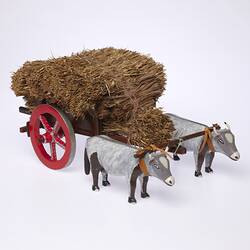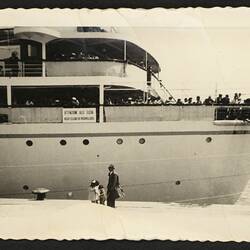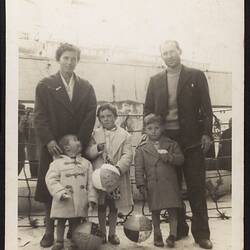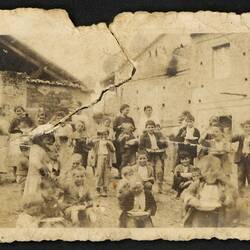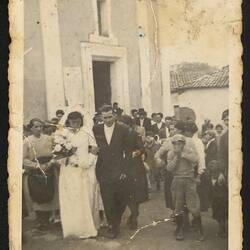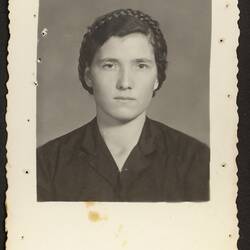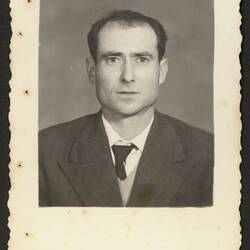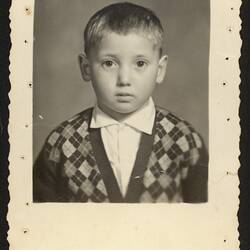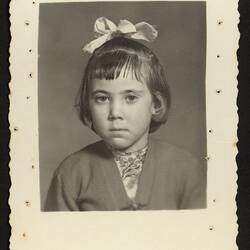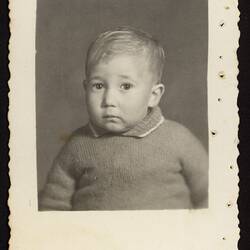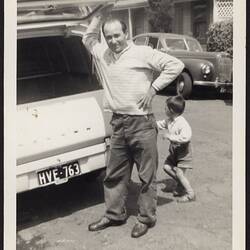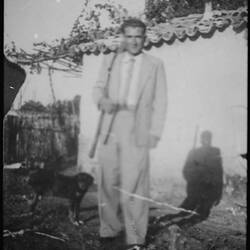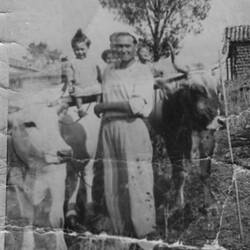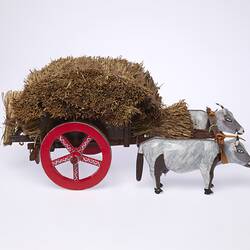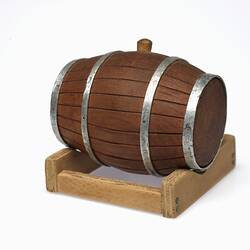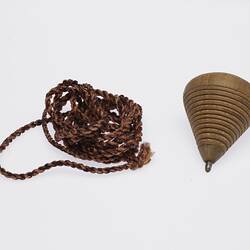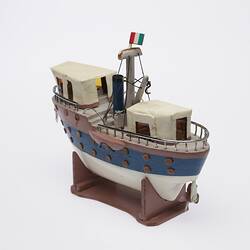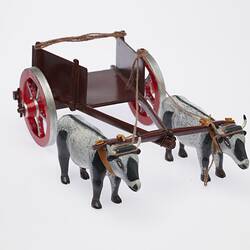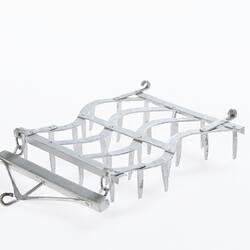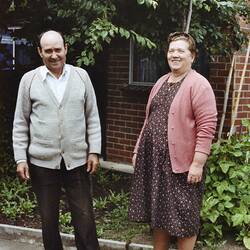Summary
Domenico Annetta migrated with his family from Calabria to Australia in 1960. He made beautiful agricultural models in his later years to document his former working life which are now in the Museum's collection.
Introduction:
Domenico and Domenica Annetta migrated to Australia on 26 April 1960 with their three children, Lucia, Antonio and Bruno.
Early Years:
Domenico, born January 1, 1929, was a subsistent farmer who worked on land that had been owned by his father and bequeathed to Domenico. He had olive and fig trees, the figs they dried and sold. and grew wheat. He grew wheat and also had a variety of vegetables and fruit trees but on a smaller scale for family use. He made wine, bread and cheese for family use only. In 1953 he married Domenica Arena and they had three children Lucia, Antonio and Bruno.They lived in a modest farmhouse typical of farmhouses of the era and of the region. Once established in Australia, Domenico sold the farm about 1974.
At a time when Italy was experiencing mass emigration due to the Europe-wide poverty caused by the devastation of World War II, Domenico and Domenica yearned for a better life for themselves and their children. Domenico's brother Giuseppe was already established in Australia, having migrated in 1951, and lived in Port Melbourne where he owned and operated a bakery and delicatessen.
Getting to the Departure Port:
The family left Sant'Angelo just one day before embarkation as they needed to travel from their village to the Port of Messina in Sicily, across the Messina Straight, which separates Calabria and mainland Italy from Sicily. Domenico hired a driver who drove a six-seater Fiat 600 to take them to Port Villa Sangiovanni where they would take a ferry to Messina.
Domenico recalled the car was small and the family were squashed in with the children sitting at the back on top of the luggage. However, enroute they were stopped by the police who warned them that a landslide blocked the road and that they needed to take an alternative route which added a further 52 kms to the trip. This was through a very steep mountainous area and required zigzagging up the mountain on very tight bends which was a little frightening.
They day after they got to Villa San Giovanni, Domenico's brother Antonio arrived with the rest of the luggage that couldn't fit into the Fiat.
Migrating to Australia:
On 27 April the family embarked the SS Australia for a 28 day voyage to Australia. Stopping at the ports of Said, Colombo, Jakarta and Fremantle they arrived at Station Pier, Port Melbourne on the evening of 24 May 1960. The family was delighted to see fireworks for the celebration of Commonwealth Day.
Early Settlement:
Domenico and Domenica, were aged 31 and 26 respectively, with their children Lucy six, Antonio four and Bruno two, when they arrived in Australia. They were immediately welcomed by Domenico's brother Giuseppe with whom they stayed. Domenico was employed by Giuseppe to deliver bread and he worked in this job for ten years. They had another child Mario not long after arriving.
Around 1963 the family purchased their first home in Brunswick and in 1966 they purchased a larger property in Reservoir. In 1970 Domenico found employment at the Ford Motor Company where he worked for 20 years. Domenico and Domenica established themselves in Reservoir, raising their family and maintaining their connection to the land through their large and productive vegetable garden.
Making Models:
In his quest to demonstrate what life on the land in Calabria was like, between 1990 and 1994 Domenico hand crafted miniature farming machinery models - mementoes of his farming life in Italy. He made the models from wood, leather, tin and wire and other found materials, hand-making the cows and horses from balsa timber.
The models represent the deliberate act of a parent to tangibly transfer memories of a former life to his children. This activity also demonstrated Domenico's previously hidden creativity. To further preserve these skills, memories and the family migration story, his son Bruno documented his father's story through recorded interviews between 2009 and 2020.
Domenica passed away in 2001 and Domenico passed away in 2020. Neither had the opportunity to return to Italy. Domenico's son Bruno reflected in 2022: 'My father made these models as a loving, lasting gift - he wanted to show his children that he had skills and knowledge as a farmer in his home town in Italy, where he had also been a respected community leader. He wanted us to be proud of him and of our heritage. He also longed for that life which I feel is represented by these models.'
More Information
-
Keywords
-
Authors
-
Article types


